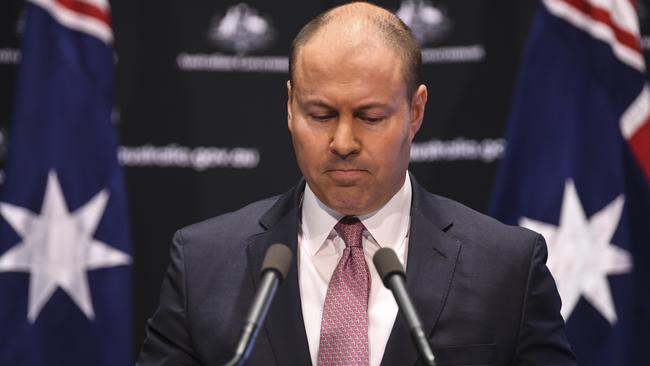
The country’s record-breaking run of 28 years without a technical recession — two successive quarters of negative growth — has helped it fend off events such as the collapse of Lehman Brothers in 2008 and the Asian financial crisis in the late 1990s.
That economic success can be attributed to a mix of good management and more than a bit of luck, but the COVID-19 pandemic is proving too big an obstacle to avoid.
Virus-related shutdowns and bushfires pushed the economy to contract 0.3 per cent in the first quarter and limit on-year growth to just 1.4 per cent, the slowest pace of expansion since 2009.
And the first-quarter downturn is set to be dwarfed by events in the second quarter, when the pain of the job losses and business failures brought on by the pandemic will come into sharp focus.
So just how bad will it get?
Estimates vary, but it will surely eclipse the recession of 1991, during which the economy contracted by 1.3 per cent in the first quarter, followed by a fall of 0.1 per cent in the second quarter.
To put it in perspective, Westpac chief economist Bill Evans expects Australia’s economy to contract by 7 per cent in the second quarter of this year. The ugly number will be driven by a collapse in household spending that is already visible in retail sales reports, credit card activity numbers and recent data on lost employment and cratering working hours.
Commonwealth Bank chief economist Stephen Halmarick expects an even bigger contraction of 8.4 per cent in the second quarter, though this is an improvement on his earlier forecast for a 9.2 per cent collapse in growth.
Numbers like these underscore the magnitude of the crisis while helping give some perspective on why Canberra has responded by opening the floodgates on spending and why the Reserve Bank has pushed interest rates to record lows and started government bond buying for the first time in its history.
In this regard, Australia’s economic policymakers need some recognition. The stimulus has been early, bold and resolute.
The second-quarter outlook is bleak, but there is cause for some optimism. This is audible in recent comments by Reserve Bank governor Philip Lowe pointing to recovering consumer confidence and evidence that spending is returning across the economy. Things might not get as bad as first feared, Dr Lowe said on Tuesday.
Though Dr Lowe, who is old enough to remember the last recession, is far from getting carried away, Australia’s successful efforts to contain the virus and its monumental fiscal response have clearly buoyed him.
To be sure, the economy is primed to bounce back in the second half of the year as it shakes off the virus-related downturn, helped by elevated iron ore prices.
Still, the recovery might not be the V-shaped one Canberra is hoping for.
With international travel still banned, business confidence near historical lows, immigration shut down and a potential drop-off in budget spending in sight as the government’s wage subsidy program ends in late September, headwinds remain stiff.
Crucially, from the embers of recession has come a spark for economic reform, something long overdue given the country’s flagging productivity and wage growth.
This suggests there is room to be upbeat. After all, it’s always darkest before the dawn.
The Wall Street Journal




Australia’s almost three decades of expansion is over, with Josh Frydenberg confirming on Wednesday that the economy is in recession, something virtually nobody in the country under the age of 50 has experienced in their working lives.